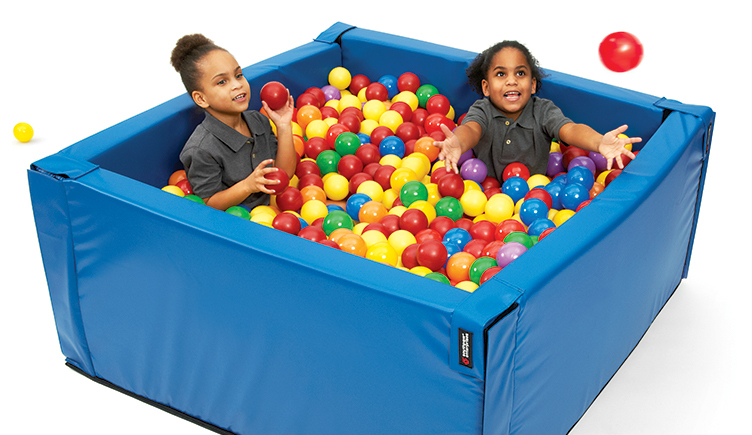Frequently, conversations surrounding sensory integration and the design and implementation of a multi-sensory environment are centered around school-aged children. However, this conversation should begin during a child’s early years. During infancy, a child is developing the entire sensory system, where the development of these senses impact attachment, regulation, arousal, motor development, spatial reasoning, feeding skills and hand-eye coordination, among other developmental skills. Each child develops their senses in a dynamic interplay, often referred to as sensory integration. As occupational therapists, we often see children that have developed sensory integration a little differently. When this occurs, a child may experience difficulties or disruptions in their daily occupations and routines—leading their families to seek our services.
In the context of feeding and mealtime, infants or toddlers who experience oral sensory integration challenges may respond negatively to sensation or touch on or near the mouth. By using a sensory-based approach, an occupational therapist may introduce a variety of experiences or objects to improve a child’s sensitivity; this may include products such as the Ark’s Z-Vibe Kit, Knobby Chewy Tubes or the Super Chew. Toddlers who experience sensory-seeking behavior, which can appear as excessive jumping or spinning, frequent or consistent movement, or “rough and tumble” play behaviors, may benefit from engaging in play on a Mini Cloud Nine crashpad, where they are able to register additional input to their bodies by crawling, walking or jumping on an uneven surface. Infants and toddlers who demonstrate extreme gravitational insecurity could be supported by Advantage Line Infant Adaptation Kit & Platform Swing combo to introduce graded movement.
Overall, there are a variety of ways that occupational therapists can introduce and target the disruptions in a young infant’s or child’s sensory system. Ideally this can be successfully addressed by building supportive relationships with the child and family. By bringing conversations to light about sensory integration during the early stages of life, children can be better equipped to participate in their daily roles, occupations and routines.
References:
Parham, L.D. & Mailloux, Z. (2015). In Case-Smith and O’Brien (Ed.), Occupational therapy for children and adolescents (7th ed., pp. 664–703). St. Louis, MO: Elsevier/ Mosby.
Korth, K. & Rendell, L. (2015). In Case-Smith and O’Brien (Ed.), Occupational therapy for children and adolescents (7th ed., pp. 664–703). St. Louis, MO: Elsevier/ Mosby.



